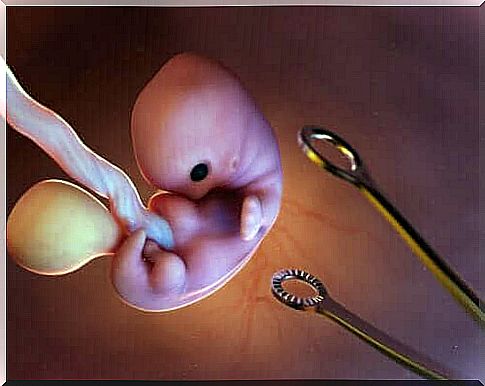What Is An Induced Abortion?

Talking about induced abortion can be shocking to many people. Whether it’s ideology or religious belief, it’s a topic that tends to spark a lot of discussion among the entire population. Even within the same country, there are often regions with different legislation on the same subject.
The reasons for using this type of abortion vary widely. For example, they range from personal decisions to clinical situations that endanger a mother’s health. There are also legal provisions to perform them in controlled places with adequate security.
What is an induced abortion?
We call induced abortion the intentional interruption of pregnancy. That is, it involves the decision to terminate a pregnancy before the 20th week (Spanish link).
The 20 week limit is purely technical. Almost all accepted definitions of abortion (Spanish link) define the barrier between a viable fetus and a fetus that is not yet. This means that with a premature birth, the chances of survival are greater once the pregnancy is already halfway through.
This goes beyond the legislation on the subject. Some states allow induced abortion up to the 20th week, others up to the 12th or 8th week. Anyway, this variability does not affect the concept of the procedure.
If the pregnancy is terminated after the pregnancy is halfway through, then there is no abortion. Most often, these conditions occur in mothers who suffer from diseases that make it unfeasible to continue the process. Di is for example in cases of pulmonary hypertension in the mother.
Based on the length of the pregnancy, an induced abortion may involve different types of techniques. This is determined to ensure minimal complications for the woman and to reduce the risk of infection or bleeding.
Procedures

The approved techniques in the countries where induced abortion is legal are broken down by the weeks in which they are applicable. We have options for the first trimester and the second trimester.
Techniques for the first trimester
During the first trimester of pregnancy until the 14th week of pregnancy: the options are a combination of misoprostol and vacuum aspiration. As we will discuss below, doctors recommend some methods over others.
Misoprostol is a drug with long-known abortifacient properties. Its sale is regulated in almost all countries, limiting its use to legal issues. The effect it produces is an increase in uterine contractions.
One way to perform the induced abortion with the drug is to combine it with methotrexate. This drug has the property of inhibiting cell replication. Together, these drugs stop fetal growth and expel the contents of the uterus.
To speed up the process, professionals in clinics combine misoprostol with mifepristone instead of methotrexate. However, the maximum prescription duration is up to 10 weeks of pregnancy.
In general, the abortion occurs within the first 6 hours of taking these drugs. However, for some women it takes longer, up to 48 hours.
The third option is aspiration, something that experts don’t recommend after the 16th week of pregnancy. It consists of sucking the fetus and placenta through the vagina with a special device.
This procedure causes some pain and discomfort for the woman. There is also bleeding from the microtrauma of the aspiration. It takes at least a day and after a short observation period the woman can go home.
Induced abortion in the second trimester

Since the fetus has grown in the second trimester, from a medical point of view, the situation is more complex to carry out. There are two options: dilation and induction.
In reality, dilation involves a combination of techniques to perform the induced abortion. Professionals use instruments to dilate the uterus, then create a vacuum with suction (as with aspiration) and finally, they scrape the interior of the organ.
Recovery is usually immediate and it is common for the woman to be discharged to go home the same day. However, due to the type of approach, women should take certain precautions in the month following the dilation.
As for induction, the technique involves stimulating a type of labor. For this reason, professionals only use this technique for very advanced cases between the 15th and 20th week of pregnancy.
Specialists then administer drugs to induce labor and the pain is comparable to that of childbirth. If necessary, if the procedure initially fails, the medical team resorts to aspiration or dilation. In doing so, they ensure that no residue remains in the uterus that could lead to complications later on.
Induced abortion takes place within a legal framework
It is worth noting that these induced abortion procedures are legal in some countries and not in others. There are many differences between laws in one region of the world and in another, so not everything applies equally in terms of legality.
The implementation of any technique of this type must therefore comply with medical standards so as not to endanger the patient’s life. Authorized clinics must have the appropriate services and tools for this.









